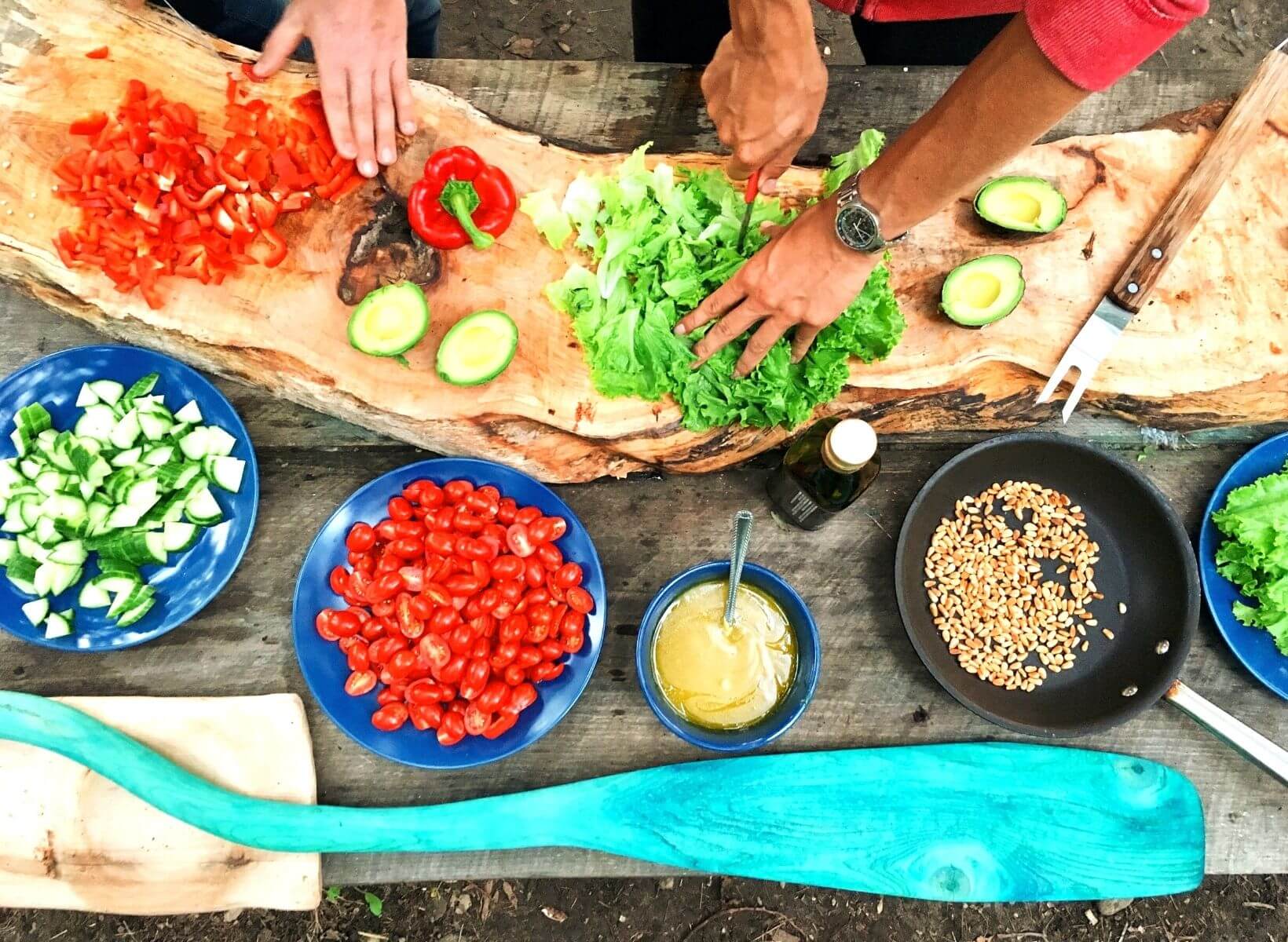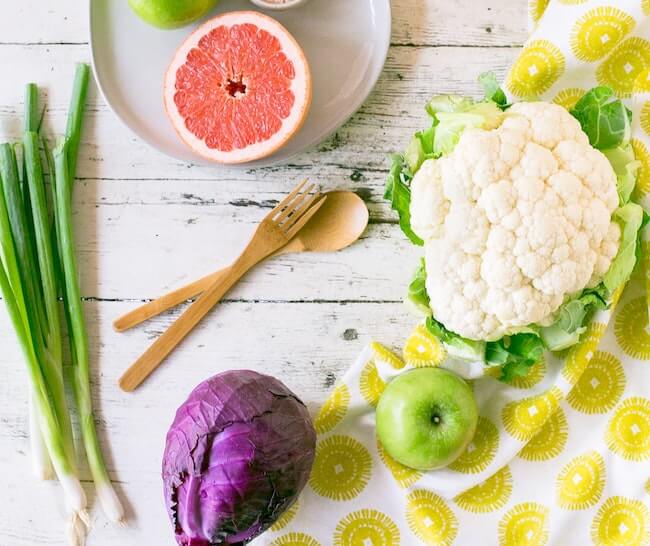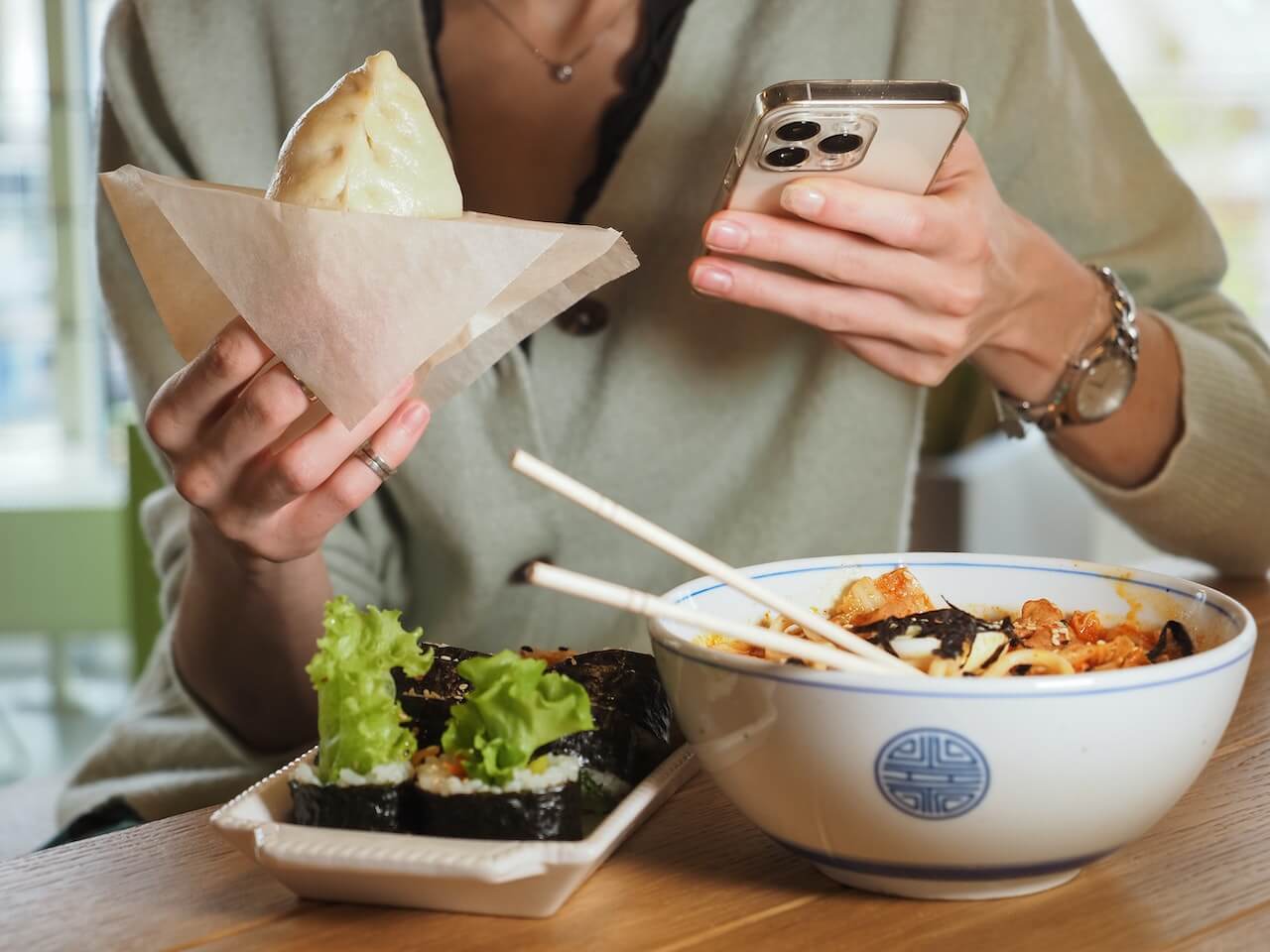A food-tracking app can be a valuable tool for those who want to improve their health through nutrition changes and meal plans. Tracking what you eat can help you identify and better understand your dietary habits, giving you an idea of what changes may offer potential benefits. Like keeping a food diary, food tracking apps can provide insight into what foods work best for you and your body.
But if you’ve never tracked your food intake before, it can be daunting to tackle alone. In this article, we’ll highlight some of the best food-tracking apps on the market and review helpful tips to keep you on track with your health goals. Whether you want to lower cholesterol levels, decrease blood pressure, gain lean muscle mass, or improve blood sugar control, food tracking can be helpful.
{{mid-cta}}
Research Behind Food Tracking
Evidence shows that user-friendly food trackers can be effective for weight loss and glucose management. Research suggests food tracking can be a significant predictor of sustainable weight loss. A 2017 study found that participants who tracked their dietary intake for at least 5 days each week experienced more substantial weight loss and sustained it longer than those who did not.1
There are a few reasons why food tracking can be so beneficial. It can help you become more aware of the foods you’re eating and better understand your dietary habits. It allows you to see where changes can be made and recognize what foods work best for you. Recording your intake can also help you stay on track to make healthy changes. Seeing the progress you’ve made can give you the motivation to continue making healthy choices.
Other Benefits of Tracking Your Foods

Tracking your food intake can support weight management efforts, but its health benefits don’t stop there. Documenting your eating habits can help you stay on top of your health goals in more ways than one. Other benefits of tracking your foods include:
- Keeps You Informed of Your Meal’s Nutritional Value: Logging your dietary intake in a tracking app can help you track macros and understand their role in health. Many tracking apps calculate the amount of protein, carbs, fat, and even micronutrients in each entry.
- Allows You to Follow a Realistic Diet Plan: Nutrition changes must be realistic to be sustainable. Using a food tracker helps you maintain realistic expectations about your dietary intake.
- Helps You Reach Your Goals: Healthy eating plays a significant role in overall health and wellness. Documenting your nutritional intake over time can help you stay motivated to pursue your health goals.
- Allows You to Eat Your Favorite Foods Moderately: Using a food tracker helps you incorporate your favorite foods mindfully without sacrificing your nutrition goals.
- Raises Awareness of the Foods You Eat: Knowledge is power, and understanding your dietary habits can help you make informed decisions.
Food Tracking to Manage Glucose for Weight Loss
When it comes to weight loss, tracking food is especially important. Companies like Noom and Weight Watchers place a lot of emphasis on low-calorie foods. However, logging your food intake and other lifestyle factors can give you different insights into what is affecting your health. You may find that adjusting your best calorie intake, carbohydrate consumption, or meal times can help you lose weight.
A continuous glucose monitor that sends your glucose data to an app with a food log can show you how different foods affect your blood sugar in real time. As you watch your glucose response and log the foods you eat, you’ll learn which foods, their portion sizes, and under what circumstances they’re eaten (after exercise, for example, or when you’re sleep-deprived) may impact your blood sugar levels.
How to Track Foods
Tracking your food can initially seem daunting, but learning how to do it is pretty straightforward. First, you’ll need to track your food intake using an app or journal. Several tracking apps are available, so find one that works best for you.
Then, simply enter the foods you ate, including your portion sizes. Depending on the app’s features, you may also be able to track other information about how food affects your body. Things like bloating and even blood sugar responses can be assessed within specific apps. This information can help identify food triggers and trends.
4 Dietary Aspects to Include on Your Food Diary
Tracking your food intake can be a powerful tool for achieving your wellness goals. The more you include in your dietary logs, the more insight you have into the potentially beneficial changes you can make. It’s more than monitoring calories in and calories out. This data-driven approach helps foster awareness of habits and enables you to make informed decisions to optimize nutritional intake.
Consider how documenting these aspects of your food intake can impact your health goals:
- Everything You Eat: Documenting everything from food to water intake ensures all nutrients are accounted for. You can monitor your daily intake, ensuring you meet your macro and micronutrient needs.
- Time of the Meal: Including meal times can be a helpful addition to your food diary, and not just for those who practice intermittent fasting. It helps you track hunger patterns and blood sugar levels to optimize your meal and snack times.
- Everything You Drink: Many beverages contain hidden calories and added sugar that can derail your health goals. Include all drinks in your calorie counter app.
- The Portion Sizes: Documenting portions is essential to understanding your nutritional intake. Eating more than one serving of a food item increases its influence.
10 Best Food Tracking Apps
Many different tracking apps are available, and all have their strengths and weaknesses. Here are a few of the best food-tracking apps available based on ratings and reviews in the App Store:
Signos

Signos members get access to a continuous glucose monitor (CGM) that sends their glucose data via Bluetooth to the user-friendly Signos app. Members can see their daily 24/7 glucose line graph and how what they eat, when they exercise, how they sleep, and more affect their glucose levels.
The Signos app and its registered dietitian nutritionists encourage users to track foods from a complete database of ingredients and products. You’ll see the calorie content and macronutrient breakdown of all the meals and snacks you log and your glucose response to the food (or combination of foods) so you can compare and contrast how different variables impact your blood sugar. This helps you make more informed decisions based on how your glucose reacts to certain foods. The app even gives you recommendations for stabilizing your glucose if there’s a spike.
Favorite foods and save homemade meals in the food log to make tracking the foods you eat often easier.
<div class="pro-tip"><strong>Learn More: </strong><a href=how-it-works>How Signos Works</a>.</div>
MyFitnessPal
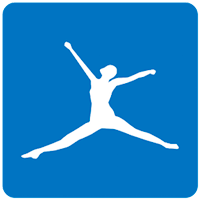
MyFitnessPal is one of the most popular (and oldest!) food-tracking apps available that also includes your physical activity. It has an extensive database of foods—including menu options at many popular restaurants—and you can track both calories and macronutrients. While not a free feature, the app also includes a barcode scanner to make tracking food easier. People who have used MFP for a long time often get hooked because they can access years of food logs, favorite recipes, and workouts.
Lose It!
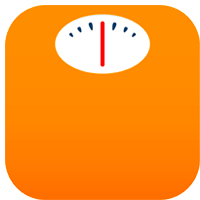
Lose It! is similar to MyFitnessPal. It has a large database of foods and allows you to track calories and macronutrients. The app also offers many helpful features, such as a calorie goal calculator and a food journal.
Cronometer
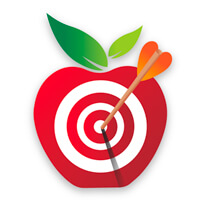
Cronometer is an app that specializes in tracking macro and micronutrients. Although it has a smaller food database than other apps, it offers more detailed information about the nutrients in those foods. This app is ideal for people who want to track their macros while also monitoring their micronutrient intake.
MyNetDiary
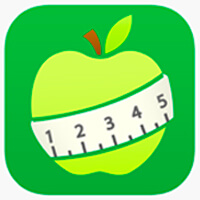
MyNetDiary is a weight loss app with food-tracking capabilities. It has a large database of foods and allows users to track calories and macronutrients, as well as body measurements such as waist size. The app also includes features like food journaling and meal plans.
Lifesum

Lifesum is another food-tracking app that focuses on weight loss. Users can choose from various diets and eating plans, including high protein and clean eating, and then select diet-specific meal plans with four recipes per day available in the app. Use the barcode scanner and stick to recipes that suit your macros to help you stay accountable.
MyPlate Calorie Counter
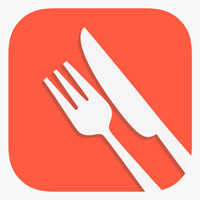
MyPlate Calorie Counter is an app from Livestrong that focuses on calorie counting. Its robust food database includes nutritional information and serving sizes for millions of foods and allows barcode scanning for quick or customized entry. MyPlate suggests foods based on your diet and preferences that align with your daily calorie goal and includes free meal plans.
Foodility
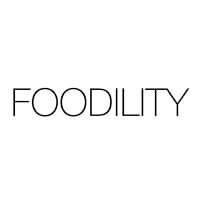
Foodility is an app that specializes in tracking food allergies and sensitivities. It has a database of foods, as well as a database of ingredients that cause allergic reactions. Users can track their symptoms and see if they have any food allergies or sensitivities. The app also includes features like food journaling and meal plans.
CarbManager
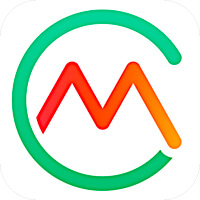
CarbManager is a food-tracking app that specializes in tracking carbohydrates. Keto and low-carb lovers flock to this app because it makes sticking to the lifestyle more accessible. Manage your health goals by integrating data from leading fitness trackers and health apps like Garmin, Fitbit, and Apple Health so you can correlate how what you eat may impact your energy, cravings, and weight.
My Diet Coach
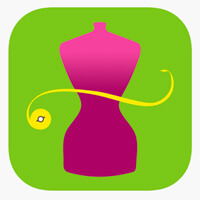
Gamify the sometimes tedious task of tracking your food by getting points. The My Diet Coach app rewards users for healthy habits, not just weight loss. If you don’t have time to log your foods after eating, take pictures of your meals, then go back and update when you’re ready. Customizable features in the pro version include adding photos, personalizing your avatar, scanning food barcodes, and creating unique challenges.
5 Helpful Tips to Stay on Top of Tracking

Food tracking can be a valuable tool for improving your health. By tracking what you eat, you can become more aware of your dietary habits and make necessary changes. It can also provide insight into what foods work best for you and your body. In the beginning, cataloging what you’re eating can be difficult.
To help you get into the habit of food logging, Signos’ content director provides the following tips to make tracking more seamless.
1. Pre-log Meals and Recipes You Eat Often: We all have our favorite foods and go-to meals that keep us sated and energized. When you aren’t running to a work meeting after a quick lunch or helping wash the dishes and get the kids started on homework, take five or 10 minutes to pre-log meals or recipes you plan to eat this week. Or, plan your meals and snacks for the next day before you wind down for bed. This will make it easier to track what you’re eating when you’re busy and more likely to skip logging.
2. Pre-log Meals When You Meal Prep: If you take time to meal prep, take 10 minutes to log what you made. That way, you remember exactly how much of each ingredient is included in your recipes. If you take a weekend afternoon to meal prep, spend an extra 10 minutes logging the recipes you made, favorite them in the app, and then you can easily pull up what you ate during the week when you're busy.
3. Keep an Eye on the Bigger Picture: Don't stress out about logging every single teaspoon of spices, fresh herbs used for garnish, or whether you used 4 or 2 Tbsp of balsamic vinegar. It's awesome to be precise, but if it creates a roadblock to logging the meal, strip it back to the ingredients you use in larger quantities. You’ll still likely land within 10–15 calories and around the same macronutrient breakdown for your meal.
4. Be Reasonably Accurate: The takeaway of food tracking is not to get lost in the weeds but to identify trends over time. What foods and food combinations helped you feel good and get closer to achieving your health goals? That said, accuracy matters, too. Approximating amounts of the main components of your meals can lead to inaccuracies that impede your progress.
5. Change Your Lens: Food logging is about gathering data and having a record to look back on. Ask your doctor or dietitian to review your food log with you to see where you can make changes to support your health.
If you want to improve your health, tracking your food intake is a great way to start. There are many different ways to track what you eat, and Signos offers a program that allows users to gather insights based on food tracking and glucose spikes. By understanding how different foods affect your body, you can make better choices about the foods you eat—which will help you reach your health goals.
<div class="pro-tip"><strong>Also Read: </strong><a href=new-year-weight-loss-goals>How to Set Realistic Weight Loss Goals You Won’t Quit</a>.</div>
- Item 1
- Item 2
- item 3
Topics discussed in this article:
References
- Ingels JS, Misra R, Stewart J, Lucke-Wold B, Shawley-Brzoska S. The Effect of Adherence to Dietary Tracking on Weight Loss: Using HLM to Model Weight Loss over Time. J Diabetes Res. 2017;2017:6951495. doi:10.1155/2017/6951495




